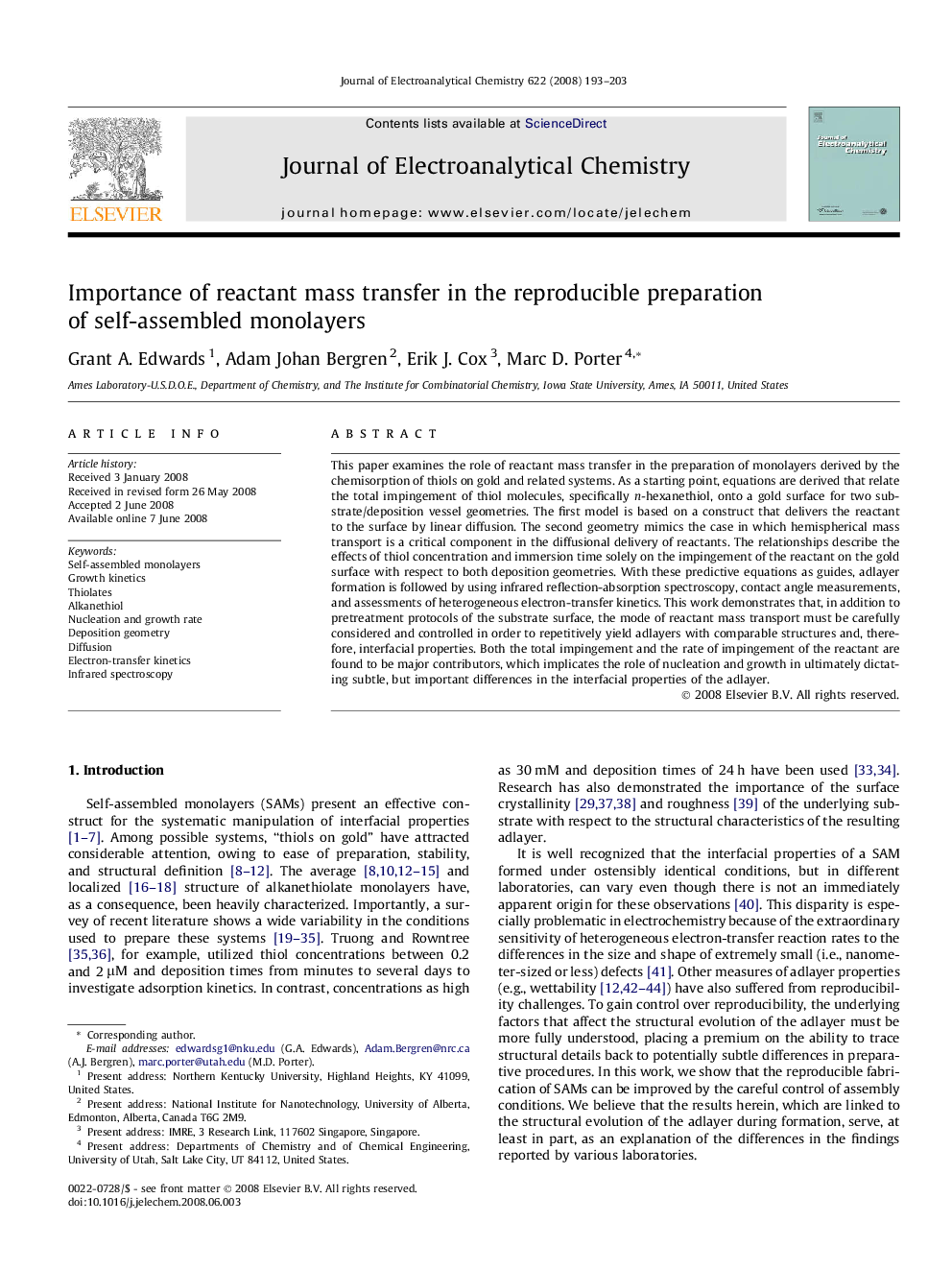| Article ID | Journal | Published Year | Pages | File Type |
|---|---|---|---|---|
| 220426 | Journal of Electroanalytical Chemistry | 2008 | 11 Pages |
This paper examines the role of reactant mass transfer in the preparation of monolayers derived by the chemisorption of thiols on gold and related systems. As a starting point, equations are derived that relate the total impingement of thiol molecules, specifically n-hexanethiol, onto a gold surface for two substrate/deposition vessel geometries. The first model is based on a construct that delivers the reactant to the surface by linear diffusion. The second geometry mimics the case in which hemispherical mass transport is a critical component in the diffusional delivery of reactants. The relationships describe the effects of thiol concentration and immersion time solely on the impingement of the reactant on the gold surface with respect to both deposition geometries. With these predictive equations as guides, adlayer formation is followed by using infrared reflection-absorption spectroscopy, contact angle measurements, and assessments of heterogeneous electron-transfer kinetics. This work demonstrates that, in addition to pretreatment protocols of the substrate surface, the mode of reactant mass transport must be carefully considered and controlled in order to repetitively yield adlayers with comparable structures and, therefore, interfacial properties. Both the total impingement and the rate of impingement of the reactant are found to be major contributors, which implicates the role of nucleation and growth in ultimately dictating subtle, but important differences in the interfacial properties of the adlayer.
